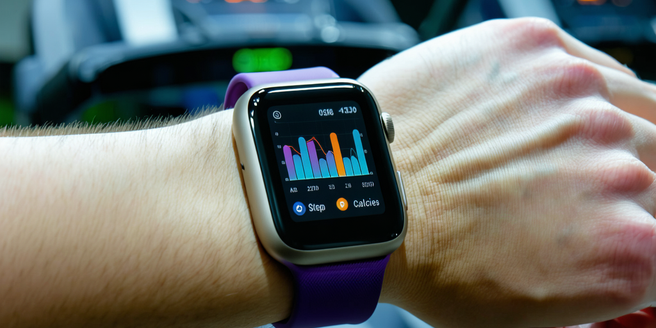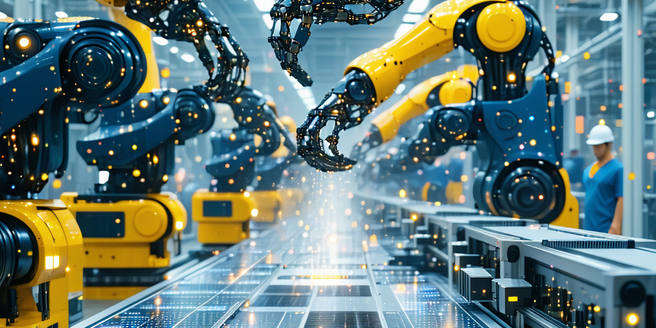
Transformative Next Wave Tech In Education
AI-powered learning tools are revolutionizing education by providing personalized experiences, analyzing learning styles, and offering real-time feedback. Virtual classrooms enhance access to quality education with interactive and flexible environments. Gamification in education boosts engagement through game-like elements, promoting critical skills. Personalized learning tailors education to individual needs, increasing engagement and achievement. Blockchain improves the security and management of academic records, allowing students to control and share their credentials. Augmented Reality (AR) enriches STEM education by offering immersive, interactive learning experiences that enhance understanding and retention. These technological advances promise to make education more inclusive, accessible, and effective.

Next Wave In Eco-friendly Transportation
Eco-friendly transportation trends are reshaping how mobility is approached, with a focus on reducing carbon footprints through electric vehicles, renewable energy, and sustainable infrastructure. Innovations in electric vehicle technologies, such as improved battery efficiency and wireless charging, are making EVs more accessible and popular. Shared mobility solutions like car-sharing and bike-sharing are gaining popularity as cities confront congestion and pollution, offering economic and environmental benefits. Sustainable public transportation initiatives, including electric buses and trains, help reduce urban carbon footprints and traffic congestion. Micro-mobility options, such as e-scooters and e-bikes, provide efficient solutions for short commutes, addressing urban mobility challenges sustainably. Government policies play a crucial role in driving green transportation, supporting the transition to sustainable transport ecosystems that enhance urban life while protecting the planet.

The Next Wave Of Fitness Wearables
Fitness wearables have evolved from basic step counters to advanced health monitoring tools, driven by rising consumer demand for comprehensive data. Modern devices integrate GPS, biometric sensors, and AI to offer functionalities like sleep tracking and stress assessment. Key emerging features include real-time ECG monitoring and personalized health insights. With advancements in AI and machine learning, wearables now provide accurate health predictions and tailored user experiences. Sustainability is also becoming crucial, with manufacturers adopting eco-friendly practices and materials. Personalization significantly boosts user engagement by delivering customized workout routines and health insights. The future of fitness wearables lies in enhancing connectivity, functionality, and eco-friendliness while maintaining user-centric innovation.

Next Wave Blockchain Applications
Decentralized Finance (DeFi) is transforming traditional financial systems by utilizing blockchain technology to enable peer-to-peer transactions, offering innovations like decentralized exchanges and lending platforms. DeFi promotes financial inclusion and efficiencies, attracting investors and developers. Non-Fungible Tokens (NFTs) are redefining digital ownership, providing creators with new revenue and control opportunities, and expanding into areas like gaming and real estate. Blockchain enhances supply chain management with improved transparency and security, while smart contracts automate transactions across industries, reducing costs and errors. In healthcare, blockchain ensures data security and interoperability, transforming how medical records are managed and shared. These technologies are driving digital transformation across sectors, shaping the future of finance, art, supply chains, business operations, and healthcare.

The Next Wave In Photography Equipment
Emerging trends and advancements in photography gear are reshaping the industry, focusing on portability, connectivity, and technological integration. Key trends include the development of lighter, compact equipment designed for high-quality mobile photography and enhanced smartphone integration for seamless photo sharing and editing. Virtual reality photography and sustainable materials are gaining momentum, catering to eco-conscious consumers. Advancements in camera technology include improved sensors, mirrorless cameras, advanced autofocus, and enhanced image stabilization, allowing for higher quality and versatile imaging. Artificial Intelligence (AI) is revolutionizing the photography process by automating scene detection, editing, and organization, enhancing creative possibilities. Innovations in lenses and accessories such as variable aperture lenses, gimbal stabilizers, and modular lens systems are expanding the creative potential. Sustainability is becoming crucial, with a shift towards eco-friendly materials, energy-efficient designs, and responsible recycling, aligning with environmentally-conscious consumer expectations.

The Next Wave In Food Technology
The food technology sector is rapidly evolving, fueled by changing consumer preferences, environmental concerns, and technological advancements. Companies are innovating to deliver healthier, sustainable, and convenient food options, such as plant-based and lab-grown alternatives. Big data and AI are enhancing supply chain efficiencies and reducing waste, offering consumers personalized nutrition and tech-driven culinary experiences. Innovative technologies like vertical farming, precision agriculture, and robotics are transforming food production, while blockchain enhances transparency. Sustainability is crucial, driving trends towards eco-friendly practices and sustainable systems. AI and robotics optimize food processing for efficiency and safety, enabling bespoke food production. Biotechnology offers solutions for health and sustainability, with advancements like genetic engineering and cultured meat addressing global challenges. The fast-evolving food tech landscape promises exciting opportunities and challenges for stakeholders focused on agility and sustainability.

Next Wave Hyperautomation In Businesses
Hyperautomation is transforming business operations by integrating advanced technologies like AI, ML, and RPA to automate complex workflows and decision-making processes. This comprehensive approach aims to increase efficiency, productivity, and adaptability. Key technologies such as RPA, AI, and cloud computing drive hyperautomation by enhancing data analytics and decision-making, offering scalability and operational resilience. Various industries, including manufacturing, healthcare, and finance, are leveraging hyperautomation for digital transformation, resulting in improved accuracy, reduced costs, and better decision-making. However, challenges such as system integration, data security, and change management must be addressed for successful implementation. Future trends indicate the rise of Autonomous Digital Enterprises and enhanced IoT integration, suggesting significant growth opportunities in hyperautomation.

Next Wave Of Contactless Payment Technologies
Contactless payment systems have transformed modern commerce by offering faster and more secure transaction methods. The adoption of NFC and RFID technologies has enabled convenient, tap-based payments, significantly changing consumer-business interactions. Biometric authentication enhances security by using unique biological identifiers, reducing fraud and increasing user confidence. Mobile wallets like Apple Pay and Google Wallet are central to future payment systems, simplifying financial management and minimizing reliance on physical money. Despite challenges, such as ensuring security and upgrading infrastructure, the evolution of contactless payments presents significant opportunities for growth and financial inclusion globally.

Next Wave Of Fintech Innovations
Decentralized Finance (DeFi) is transforming the finance sector by using blockchain to enable direct transactions, thereby eliminating intermediaries like banks. This shift promises increased financial autonomy and inclusivity, with DeFi's growth challenging traditional financial frameworks. Meanwhile, AI and machine learning in fintech are optimizing processes, reducing costs, and enhancing user experiences with personalized solutions and robust fraud detection. Blockchain's role extends beyond cryptocurrencies, boosting security and efficiency in fintech transactions. Innovative payment solutions, including mobile systems and digital wallets, are reshaping transactions by offering greater convenience. The rise of fintech demands robust cybersecurity measures to safeguard data in an era of increasing cyber threats. Fintech is also impacting traditional banking, offering agile, cost-effective, and user-friendly alternatives that challenge the status quo and drive changes in banking services.

Next Wave Robotics In Everyday Life
Next-gen robotics are revolutionizing industries with advanced technology, AI, and machine learning, enabling robots to learn and improve efficiency in sectors from manufacturing to healthcare. Key innovations like AI algorithms and enhanced sensors are integrating robots into daily life, performing tasks such as home assistance, agriculture, and customer service. In homes, robotics streamline chores, enhance convenience, and improve quality of life. Workplace robotics increase efficiency by handling repetitive tasks, freeing humans for creative roles. As robotics evolves, the focus is on human-robot collaboration while addressing challenges like ethical interactions, job displacement, and data security. A balanced approach is essential for realizing the benefits of robotics sustainably.

Next Wave Cloud Computing
The evolution of cloud technologies has drastically transformed business operations, evolving from basic storage solutions to comprehensive platforms that include big data analytics, machine learning, and AI. Modern businesses increasingly adopt hybrid and multi-cloud strategies to enhance IT infrastructure, drive agility, and meet regulatory standards. Key trends shaping cloud computing include AI and machine learning integration for enhanced data processing, the rise of serverless and cloud-native technologies, and edge computing for reduced latency and greater efficiency. AI and ML significantly improve cloud systems through advanced data analysis and resource optimization, offering scalable solutions tailored to demand. Edge computing, meanwhile, revolutionizes the cloud landscape by processing data closer to its source, thus improving response times and reducing bandwidth costs. As cloud services advance, security remains a pressing challenge, requiring robust strategies to safeguard data and privacy in hybrid environments.

The Next Wave Of Photography Drones
Drone technology has made significant strides, particularly in photography, with modern drones featuring high-resolution cameras, gimbals for stabilization, and GPS for precise navigation. These advancements enable the capture of breathtaking aerial imagery and footage. Key features of today's photography drones include obstacle avoidance, intelligent flight modes, and real-time video transmission, vital for any serious aerial photographer. AI enhances drone functionality further by enabling smart navigation and dynamic tracking, transforming aerial photography. Leading drone models like DJI Phantom and Mavic series, known for their quality and portability, and Skydio drones with cutting-edge AI, stand out for aerial photography. Safe and legal operation of drones is crucial, involving adherence to regulations and safety protocols. Future trends point to even more innovative and accessible drone photography with advances in sensors, machine learning, and battery technology, promising richer imagery and smarter operations. Understanding these developments is key to effective drone use in photography.